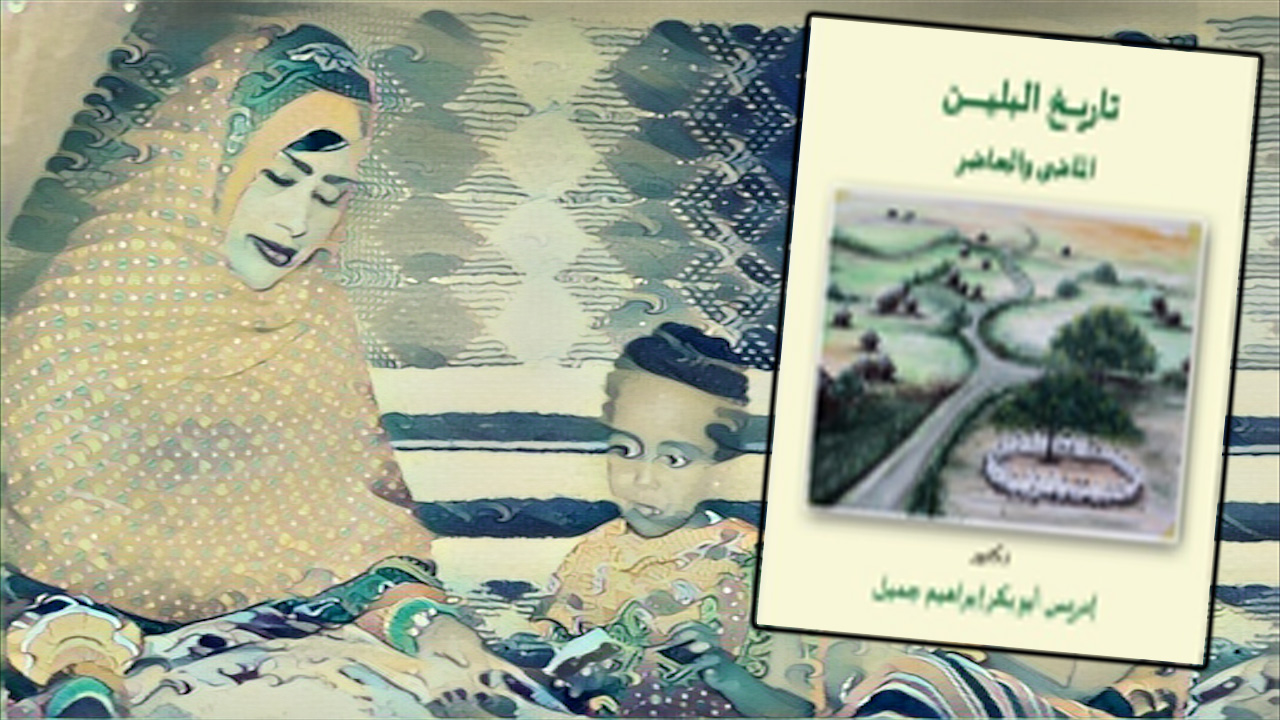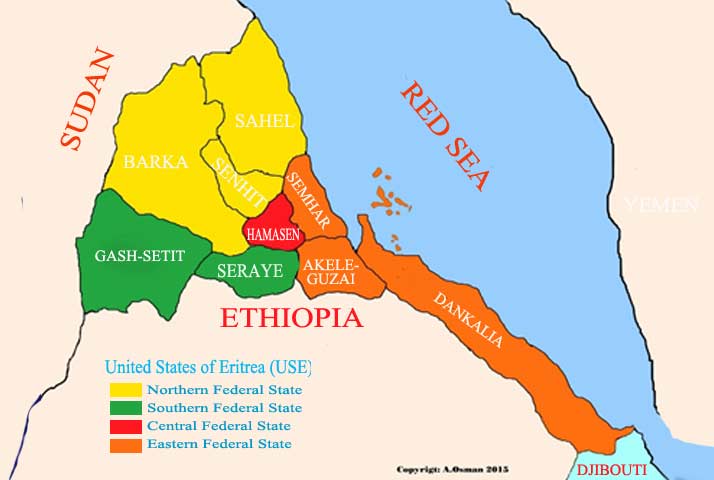Book Review: The History of Bilen (by Dr. Jamil Idris)

Book Title:The History of Bilen, past and present
Pages. : 245
Publisher: Dar Alma’arif, Aljeria, 2018
Language : Arabic (تأريخ البلين ـ الماضي والحاضر )
Author. : Dr. Jamil Idris
Reviewer : Ismael Ibrahim Al-Mukhtar
Diversity is a social treasure with immense power to enrich, enlighten and broaden social perspectives. Reversely, it could be a social poison that heightens societal tensions and increase communal conflicts. The level of maturity of any given society is a key determinant of the outcome of social diversity. Eritrea, given its location on Red Sea, is a vastly diverse nation. Despite its relatively small size and population, it speaks in nine languages, has variety of cultures, customs, traditions etc. Highlighting the diverse nature of Eritrea, the late Osman Sabe once described Eritrea as a “continent.” Diversity’s benefits come to fruition only when members of a society see it as a treasure that enriches their communal life, rather than a problem that impedes their social harmony. When members of a society treasure their diversity, they seek to know more about their social partners, they become more accepting and inclusive. As the Arabic proverb goes, a man is a foe of what he knows not. Ignorance breeds fear, mistrust and ultimately leads to stereotyping, racism, bigotry, and xenophobia. Any time the voices of hate, conspiracy, ethnocentrism, demonization become louder, society’s level of maturity and civility take a deep dive.
During the era of armed struggle, a great attention was given to Eritrean music, dances, dresses etc. This has certainly helped in creating greater awareness of the rich variety of Eritrean culture. Along with this came some efforts, albeit at a smaller scale, to write about regional histories, languages, norms etc. The Italians took early lead in this area and Eritrean writers followed suit. In recent years, many ethnic focused books have been authored by Eritrean writers, such as:
• The history of the Afar, the Danakel (Al Manhal Fi Tareekh Wa Akhbar Al Afar, Al Danakel, 1997) , co-authored in Arabic by Dr. Hashim and his father Jamal al-Din Shami;
• The Saho of Eritrea, Ethnic Identity and National Consciousness (2013), by Abdulkader Saleh Mohamed;
• A History of Tigrinya Literature in Eritrea (2010), by Ghirmai Negash and others.
The latest addition to these series of books is ‘The History of Bilen, past and present (Tareekh Al Bilen, Al Madi Wa Al Hader, 2019)’, authored in Arabic by Dr. Jamil Idris.
Unlike colonial writings, most of these books were authored by insiders, who belong to these segments of Eritrean communities. This has its pros and cons. On one hand, insiders have the advantage of direct personal experience that gives them intimate knowledge and more accurate perspectives; on the other hand, insiders are more prone to bias, exaggeration and potentially being less critical. Motives of a writer is a key factor in determining the nature of a book. Writers who write with genuine academic objectives provide value added research as opposed to those whose objective is to glorify their ethnic community and give credence to clannish myths. Once a prolific writer was forcibly assigned to write about the history and the glory of the Buyid Persian dynasty (934-1062). As he was preoccupied with writing the book, he was asked what are you writing? He responded, “tales I fabricate and myths I refurbish.” Hence, a critical reading becomes always necessary, particularly when the authors talk about their own ethnicity or group.
Overview
In the multi cultural Asmara I grew up, I came to know some Bilen in my neighborhood. They were a mix of Muslims and Christians. My first observation of the Bilen was their tolerance and their social ease. I was surprised to see some Christian Bilen having Muslim sounding names and seeing members of the same extended family belonging to Islamic and Christian faith. I met a Christian Bilen who knew how to recite Quran. He told me when he was a kid, he used to go to the Quran school with his cousins who were Muslims. This is probably unique to the Bilen. The book, The History of Bilen (Tareekh Al Bilen..) not only confirmed my observation, but it further illustrated that the Bilen are not only multi-faith, but they are also multilingual, speaking in addition to their language, Tigrinya, and Tigre. This perhaps would naturally position the Bilen to be champions of tolerance and potentially the antithesis of chauvinistic outlooks.
The author of the book is well positioned to address his subject. He himself is a Bilen, he speaks additionally Tigrinya, Arabic and English. He combines with that, a solid academic and research credentials. He holds a PhD from the Malay University in International Politics. He lectures at the European Institute for Humanities. He has a number of publications, mostly in Arabic. Obviously, his book isn’t the first to be written on the history of Bilen, there are a number of other books as well, but his book is a new addition that sheds more light on some aspects of the rich history of Bilen.
Following broad introductory notes, the author discusses the origin of the Bilen, noting that their language belongs to the Hamitic family of languages. He notes that the earliest reference to Bilen, specifically by name, was made by the historian Al Idrisi (1099-1166). Noting the difficulty of establishing the exact origins of Bilen, as they are based on oral traditions and impacted by generational migrations and intermarriages, the author acknowledges the difficulty of making evidence based definitive conclusions. Furthermore, he discusses the association of Bilen -particularly the Tarqe branch- with the “Ago” in “Lasta” Ethiopia. Three theories are proposed by historians. First, the Bilen originated from “Lasta” and migrated to Eritrea. Second, they originated from Eritrea and migrated to Ethiopia. Third, they were spread across the region -north to south-, but they were split into northerners and southerners with the emergence of the rival Semitic Kingdom of Axum.
The Bilen are of two main groups: “Tarqe”, who are mostly Catholic; and “Tawqe”, who are Muslims. The Bilen are mostly agriculturalist who live in “Halhal”, “Keren” and its surroundings. They are surrounded by larger groups such as Beni Amer, Habab and Tigrinya speakers. Being smaller in number, they have been under constant pressure to assimilate in the surrounding cultures. Furthermore, the Bilen had a long history of struggle to maintain their independence from the ongoing attempts by the kings of Abyssinia and their agents in the highlands. Refusing to pay tributes and be subjugated, they were the object of constant raids, which they fought courageously, but it took a heavy toll on them.
The arrival of Egyptians who took over from the Ottomans, brought some prosperity and peace to their areas. The rise of Massawa and Sawakin as important trade ports in the Red Sea led to increased trading activity and prosperity to Kern and its surrounding. The appointment of Werner Munzinger (1832-1875), a Swiss explorer, by the Egyptians as governor had positive outcome for the Bilen. He was married to a powerful Bilen woman known as Fatnah. He was also very well versed in the Bilen culture. The eventual Egyptian withdrawal from the areas they controlled in Eritrea, created a power vacuum and the Bilen were squeezed between the two rival regional powers, the Mahdist in Sudan and Yohannes’s viceroy Ras Alula, who continued raiding and pillaging their lands. To protect their areas, the Bilen sided with Mahdist, and some of their prominent leaders fought along the Mahdist forces.
As the Italians encroached on Eritrea, they took Keren. The Bilen along with other Eritreans were the object of exploitation. Even though, the Italian rule brought peace and order, young Eritreans were deprived of education and were conscripted and forced to fight in Italian imperialistic wars. Around 9,000 Eritreans were killed in fighting between the Italians and the British around Keren. With the arrival of the British, new opportunities for education were opened, many Bilen took advantage of that and excelled in education. The political struggle to determine the future of Eritrea, adversely affected the Bilen more than any other groups. The political divide between Eritreans, unfortunately, was along religious lines. Even though there were exceptions in both camps, the overwhelming majority of Muslims were pro-independence while the majority of Christians were pro-union. Since many other Eritrean ethnic groups belonged to one religion, their internal cohesion remained intact. However, the Bilen were split; the Christians supported the unionist camp, while Muslims supported the independence option. Fortunately, this rift started to heal gradually with eventual emergence of a national consensus on independence.
The Bilen played key roles during the era of Armed struggle. Beginning with the Haraka to the formation of ELF, they were at the center stage. Furthermore, many Bilen who served in the Sudanese army, joined ELF from its inception. Unfortunately, the growing pro-independence national consensus was compromised by factional and sectarian frictions. The first major split, even though political, had still a religious and ethnic outlook. The EPLF emerged as a rival to ELF. It was predominantly made up of Christian highlanders and some Muslim Massawans. The Bilen remained mostly loyal to ELF and accordingly became underrepresented in the EPLF (later, PFDJ) power structure.
As Ethiopia unleashed its attack on lowlands, the Bilen suffered immensely. The Bilen migration begun in the ‘60s and continues today. They are spread all over the world, mostly concentrated in Port Sudan. The author discusses the Bilen traditions, religious practices, and social norms. He discusses the Bilen language and notes that it is in great danger of decline due to the pressure it faces from Tigrinya and Tigre. He also discusses the Bilen population and notes lack of reliable statistics in Eritrea. The estimates given range between 2-8%. The author believes the 7.5% estimate would be more accurate. Throughout the book, the author mentions the names of various Bilen notables who played important roles in Eritrean national affairs. The author also highlights the roles played by Bilen teachers and scholars and notes the names of the many Bilen teachers, in Islamic schools in Keren, who were prisoned in the 1994 crackdown and their whereabout are unknown.
Overall, the book is well written and well researched. His references are wide ranging. It is also easy to read and follow. There are many issues the author discussed with no conclusive positions, noting the need for more research. Understandably, as observed by Dawit Mesfin (author of the biography of Woldeab Woldemariam), Eritrean writers in diaspora face a limitation due to lack of access to resources inside Eritrea. The author did a good job in keeping a distance between his affiliation to the Bilen and objective analysis. Although, he consistently addressed the subject in broader terms, in some chapters he focused more on the Tawqe branch. This could be due to what the author noted, that despite limited comprehensive study of Bilen, the available literature is Tarqe branch focused; the book is an attempt to bridge the gap.
Who should read this book
This book and similar isn’t only for Bilen, but for every Eritrean intellectual. The wise dictum of understand before you seek to be understood, makes it incumbent upon opinion leaders to go out of their comfort zone and intellectual ghettoes to read more about other groups, perspectives, and persuasions. Social harmony can only be enhanced with celebrating diversity, embracing others, and broadening perspectives. Chauvinistic and domineering voices can only be curbed when all members of a society open their ears to the sentiments, the struggles, the experiences of alienation and exclusion felt by the marginalized amongst them. Ethnocentric views that see the world through their own ethnic lenses, do not only create delusional views, but also hamper communal peace, social maturity, and civilized discourses!
Reference:
[1] هاشم وجمال الدين الشامي، المنهل في تاريخ وأخبار العفر الدناكل،
[11] تاريخ البلين


Awate Forum